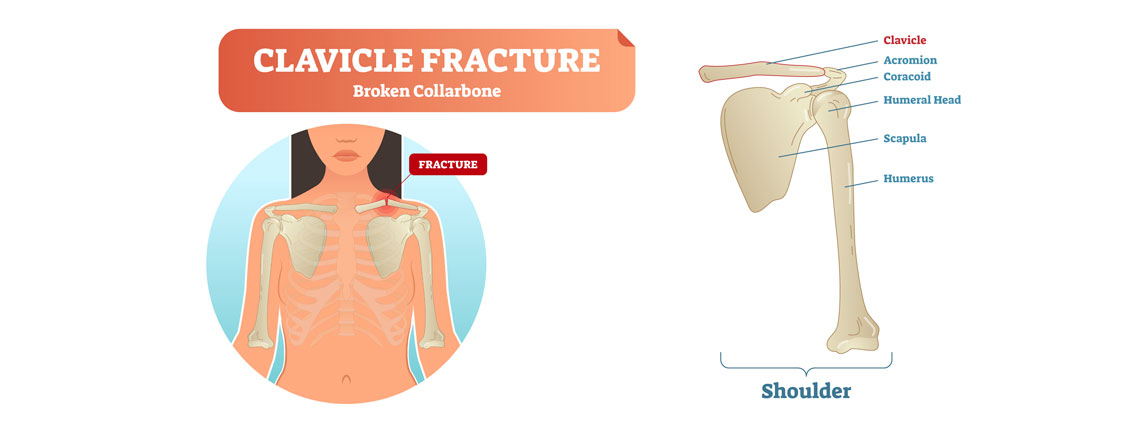
Clavicle Fracture
Overview
Of all adult fractures, clavicle fractures account for around 5% of fractures. However, according to Johns Hopkins Medicine, the clavicle is one of the most fractured bones in the body. If you have a clavicle fracture you may find it difficult to move your arms. You may find that your shoulder is sagging downward and forward. A grinding feeling may occur when you try to raise your arm. Many will see swelling, bruising, and a bump over the bone break. When you break your clavicle, you’ve broken a bone called the collarbone. This is one of the main bones in your shoulder. You may have experienced this injury due to a fall on an outstretched arm or a car collision. The weight and pressure put on the collarbone may have caused it to fracture. Clavicle fractures occur in patients of all ages.
There are three main locations of clavicle fractures. The first is the least common and is located near the sternum. The second is a fracture located near the AC joint. The third is the most common and it’s located between the sternum and AC joint. If you suspect you have a clavicle fracture begin by immobilizing your arm and use ice for 20-30 minutes on the injury. Refrain from placing the ice directly on the skin. Then schedule an appointment so your injury can be assessed by professionals. It’s rare for your broken bone to puncture your skin. The immediate intervention will prevent infection from entering the body. Other more severe symptoms are tingling, numbness, or weakness in your arm. Call us immediately if you experience any of these severe symptoms.Nonsurgical Treatment Options for a Clavicle Fracture
During an in-office visit, we will examine your clavicle. We will ask for an account of how and when the injury occurred. We will then ensure your nerves and blood vessels aren’t impacted by the fracture. Then we may order an X-ray to see what’s happening under the skin. This will help us understand the severity and exact location of the broken bone.
Depending on the severity of your injury one of the four treatment options may be provided:- Sling. The first nonsurgical treatment is wearing a sling. This provides support and comfort to your arm. It also immobilizes your arm which allows your bone to heal properly.
- Ice.The second treatment is applying ice to the area for 20 minutes every two hours will assist in decreasing the swelling and reducing pain.
- Anti-inflammatory Medication. The third treatment is taking an anti-inflammatory drug, like acetaminophen, you may be able to reduce your pain and inflammation. Medication may be more necessary to help you sleep. We may provide stronger medication depending on your level of pain.
- Physical Therapy. The final treatment is physical therapy exercises. They may be provided for you to do at home to alleviate pain, improve flexibility, and increase your range of motion.
You can expect a full recovery generally in four months. Children and teenagers may see a full recovery earlier.

